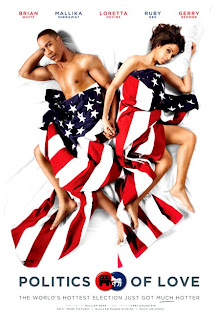My name is Tucker Max, and I am an asshole. I get excessively drunk at inappropriate times, disregard social norms, indulge every whim, ignore the consequences of my actions, mock idiots and posers, sleep with more women than is safe or reasonable, and just generally act like a raging dickhead. -Tucker Max
It should come as no surprise that there are more than a few people in this world who don’t hold Tucker Max in high esteem. He makes no pretenses of being what most would consider a nice person, and makes no apologies for his behavior; behavior which is apparently rewarded with tons of sex and money. Recently, however, this reputation prevented him from making a $500,000 donation to Planned Parenthood. Naturally, this generated something of a debate, full of plenty of moral outrage and inconsistent arguments. Since I’ve been thinking and writing about reasoning and arguing lately, I decided to treat myself and indulge in a little bit. I’ll do my best to make this educational as well as personal, but I make no promises; this is predominately intellectual play for me.
Sometimes you just have to kick back and treat yourself in a way that avoids going outside enjoying the nice weather.
So here’s the background, as it’s been recounted: Tucker find himself with a tax burden that can be written off to some extent if he donates money charitably. Enterprising guy that he is, he also wants to donate the money in such a way that it can help generate publicity for his new book. After some deliberation, he settles on a donation of $500,000 to Planned Parenthood, as he describes himself as always having been pro-choice, having been helped by Planned Parenthood throughout his life, and, perhaps, finding the prospect funny. His condition for the donation is that he wanted his name on a clinic, which apparently is something Planned Parenthood will consider if you donate enough money. A meeting is scheduled to hammer out the details, but is cancelled a few hours before it was set to take place – as Tucker is driving to it – because Planned Parenthood suddenly became concerned about Tucker’s reputation and backs out of the meeting without offering any alternative options.
I’ll start by stating my opinion: Planned Parenthood made a bad call, and those who are arguing that Planned Parenthood made the correct call don’t have a leg to stand on.
Here’s what wasn’t under debate: whether Planned Parenthood needed money. Their funding was apparently cut dramatically in Texas, where the donation was set to take place, and the money was badly needed. So if Planned Parenthood needed money and turned down such a large sum of it, one can only imagine they had some reasons to do so. One could also hope those reasons were good. From the various articles and comments on the articles that I’ve read defending Planned Parenthood’s actions, there are two sets of reasons why they feel this decision was the right one. The first set I’ll call the explicit arguments – what people say – and the second I’ll call the implicit motivations – what I infer (or people occasionally say) the motivations behind the explicit arguments are.
…but didn’t have access to any reproductive care, as the only Planned Parenthood near me closed.
The explicit arguments contain two main points. The first thrust of the attack is that Tucker’s donation is selfish; his major goal is writing off his taxes and generating publicity, and this taints his action. That much is true, but from there this argument flounders. No one is demanding that Planned Parenthood only accept truly selfless donations. Planned Parenthood itself did not suggest that Tucker’s self-interest had anything at all to do with why they rejected the offer. This explicit argument serves only one real purpose, and that’s character assassination by way of framing Tucker’s donation in the worst possible light. One big issue with this is that I find it rather silly to try and malign Tucker’s character, as he does a fine job of that himself; his self-regarding personality is responsible for a good deal of why he’s famous. Another big issue is that Tucker could have donated that money to any non-profit he wanted, and I doubt Planned Parenthood was the only way he could have achieved his main goals. Just because caring for Planned Parenthood might not have been his primary motive with the donation, it does not mean it played no part in motivating the decision. Similarly, just because someone’s primary motivation for working at their job is money, it does not mean money is the only reason they chose the job they did, out of all the possible jobs they could have picked.
The second explicit argument is the more substantial half. Since Tucker Max is a notable asshole, many people voiced concerns that putting his name on a clinic would do Planned Parenthood a good deal of reputational damage, causing other people to withdraw or withhold their financial or political support. Ultimately, the costs of this reputational damage would end up outweighing Tucker’s donation, so really, it was a smart economic (and political, and moral) move. In fact, one author goes so far as to suggest that taking Tucker’s donation could have put the future of Planned Parenthood as a whole in jeopardy. This argument, at it’s core, suggests that Planned Parenthood lost the battle (Tucker’s donation) to win the war (securing future funding).
There are two big problems with this second argument. Most importantly, the negative outcome of accepting Tucker’s donation is purely imagined. It might have happened, it might not have happened, and there’s absolutely zero way of confirming whether it would have. That does not stop people from assuming that the worst would have happened, as making that assumption gives those defending Planned Parenthood an unverifiable potential victim. As I’ve mentioned before, having a victim on your side of the debate is crucial for engaging the moral psychology of others, and when people are making moral pronouncements they do actively search for victims. The other big problem with this second argument is that it’s staggering inconsistent with the first. Remember, people were very critical of Tucker’s motivations for the donation. One of the most frequently trotted out lines was, “If Tucker really cared about Planned Parenthood, he would have made the donation anonymously anyway. Then, he could have helped the women out and avoided the reputational harm he would have done to Planned Parenthood. Since he didn’t donate anonymously (or at least, I think he didn’t; that’s kind of the rub with anonymous donations), he’s just a total asshole”.
“I was going to refill my birth control prescription here, but if Tucker Max helped keep this clinic open, maybe I’ll just get pregnant instead”
The inconsistency is as follows: people assume that other donors would avoid or politically attack Planned Parenthood if Tucker Max was associated with it. Perhaps some women would even avoid the clinic itself, because it would make them feel upset. Again, maybe that would happen, maybe it wouldn’t. Assuming that it would, one could make the case that if those other supporters really cared about Planned Parenthood, then they shouldn’t let something like an association of a single clinic with Tucker Max dissuade them. The only reason that someone who previously supported Planned Parenthood would be put off would be for personal, self-interested reasons. The very same kind of motivation they criticized Tucker for initially. Instead of bloggers and commenters writing well-reasoned posts about how people shouldn’t stop supporting Planned Parenthood just because Tucker Max has his name on one, they instead praise excluding his sizable donation. One would think anyone who truly supported Planned Parenthood would err on the side of making arguments concerning why people should continue to support it, not why it would be justifiable for people to pull their support in fear of association with someone they don’t like.
Which brings us very nicely to the implicit motivations. The core issue here can be best summed up by Tucker himself:
Most charities are not run to help people, they are run because they are ways for people to signal status about themselves to other people…I wasn’t the “right type” of person to take money from so they’d rather close clinics. It’s the worst kind of elitism, the kind that cloaks itself in altruism. They care more about the perception of themselves and their organization than they care about its effectiveness at actually serving the reproductive needs of women.
People object to Tucker Max’s donation on two main fronts: (1) they don’t want to do anything that benefits Tucker in any way, and (2) they don’t personally want to be associated with Tucker Max in any way. Those two motivations are implicitly followed by a, “…and that’s more important to me than ensuring Planned Parenthood can continue to serve the women and men of their communities”. It looks a lot like a costly display on the part of those who supported the decision. They’re demonstrating their loyalty to their group, or to their ideals, and they’re willing to endure a very large, very real cost to do so. At least, they’re willing to let other people suffer that cost, as I don’t assume all, or even most, of the bloggers and commenters will be directly impacted by this decision.
Whatever ideal it is that they’re committed to, whatever group they’re displaying for, it is not Planned Parenthood. Perhaps they feel they’re fighting to end what they perceive as sexism, or misogyny, or a personal slight because Tucker wrote something about fat girls they found insulting. What they’re fighting for specifically is irrelevant. What is relevant is that they’re willing to see Planned Parenthoods close and men and women lose access to their services before they’re willing to compromise whatever it is they’re primarily fighting for. They might dress their objections up to make it look like they aren’t self-interested or fighting some personal battle, but the disguise is thin indeed. One could make the case that such behavior, co-opting the suffering of another group to bolster your own cause, is rather selfish; the kind of thing a real asshole would do.




























